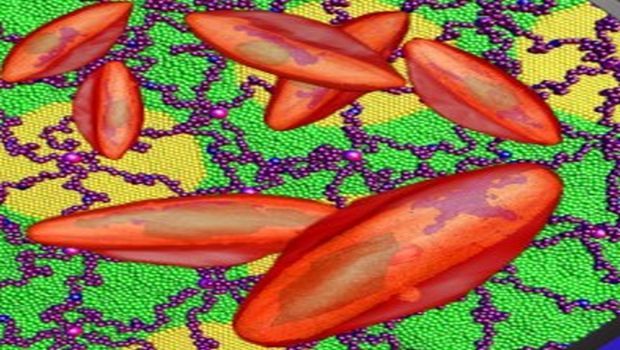Cracking the Code of the Malaria Parasite May Help Stop Transmission
The most dangerous malaria parasite, Plasmodium falciparum, is responsible for nearly half a million deaths annually across Africa and Southeast Asia. Of increasing concern, this parasite is now developing resistance to common antimalarial drugs. Gaining a better understanding of the parasite’s development in the body is urgently required. Now, a multi-university team, which includes Penn State, has broken the code that may lead to new defenses against the deadly parasite.


Electron micrographs of malaria gametocytes. Courtey of Boyin Liu and Eric Hanssen, University of Melbourne, and Yao Zhang and Peng Zhao, Penn State
The most dangerous malaria parasite, Plasmodium falciparum, is responsible for nearly half a million deaths annually across Africa and Southeast Asia. Of increasing concern, this parasite is now developing resistance to common antimalarial drugs. Gaining a better understanding of the parasite’s development in the body is urgently required. Now, a multi-university team, which includes Penn State, has broken the code that may lead to new defenses against the deadly parasite.
To get a clear picture of how the parasite manipulates its host - the human red blood cell - an international, multidisciplinary team of life scientists, mathematicians and engineers, including Sulin Zhang, associate professor of engineering science and mechanics and biomedical engineering at Penn State, has used advanced imaging technology coupled with computationally efficient coarse-grained modeling to understand how the sexual blood stage of the parasite transforms its own structure and then the structure of the red blood cell to hide from the body’s normal defenses and later re-enter the bloodstream for transmission via mosquito bite. With this understanding, methods to inhibit the blood cell’s transformation may be possible.
“Once you understand the molecular mechanisms, it becomes easier to find drugs to target them,” says Zhang, who developed the computational methods the group used to understand the remarkable physical transformations in the infected red blood cells that allow them to avoid removal in the spleen and later prepare to be transmitted to a mosquito host.
Healthy red blood cells are able to squeeze through small slits in the spleen, whereas damaged and aging red blood cells cannot and are filtered out and removed from the circulation. To avoid this fate, the sexual stage malaria parasite first makes the red blood cell rigid and hides out in deep tissue, then when it is mature, the infected red blood cells become flexible and elastic, ready to be picked up by a mosquito for disease transmission. Malaria scientists have long wondered how it achieves this remarkable transformation.
To understand these changes, biologists prepared samples of parasites at each stage and studied the changing microstructure using atomic force microscopy. This revealed changes in the organization of a meshwork of tiny spring-like proteins in the blood cell membrane. When the parasite is ready for transmission, it reverses the structural changes.
The team, which included professors Leann Tilley and Matthew Dixon, University of Melbourne and Rajesh Chandramohanadas, Singapore University of Technology and Design, then turned to Zhang, who developed a molecularly faithful and computationally efficient model to explain how subtle changes to the molecular structure of the spring-like proteins of the red blood cell were sufficient to make the cell either rigid or flexible.
Their work was reported in an early online edition of the Proceedings of the National Academy of Sciences (PNAS) April 12 in an article titled “Reversible host cell remodeling underpins deformability changes in malaria parasite sexual blood stages.”
The team is continuing to use Zhang’s model to simulate the overall shapes and the flow dynamics of infected red blood cells in the bloodstream, providing further understanding to researchers looking to find ways to inhibit the malaria parasite’s spread.
Funding was provided by the Australian Research Council and National Health and Medical Research Council; Singapore University of Technology and Design; and the U.S. National Science Foundation.
Source: Penn State Materials Research Institute
Breaking the Cycle: Long COVID's Impact and the Urgent Need for Preventative Measures
November 15th 2024Masking, clean air, and vaccinations are essential in combating COVID-19 and preventing long-term impacts, as evidence mounts of long COVID's significant economic, cognitive, and behavioral effects.
Why Clinical Expertise Is the Cornerstone to Your Most Profitable Business Line
November 14th 2024Perioperative nurses bring vital skills in patient safety, infection control, and quality improvement. They enhance surgical outcomes and support health care systems during complex, high-risk procedures.
Clean Hospitals Corner With Alexandra Peters, PhD: The Issues Around Outsourcing
November 7th 2024Outsourcing environmental hygiene in health care facilities offers cost benefits but often compromises quality. Effective oversight, training, and standards are essential for ensuring patient safety.